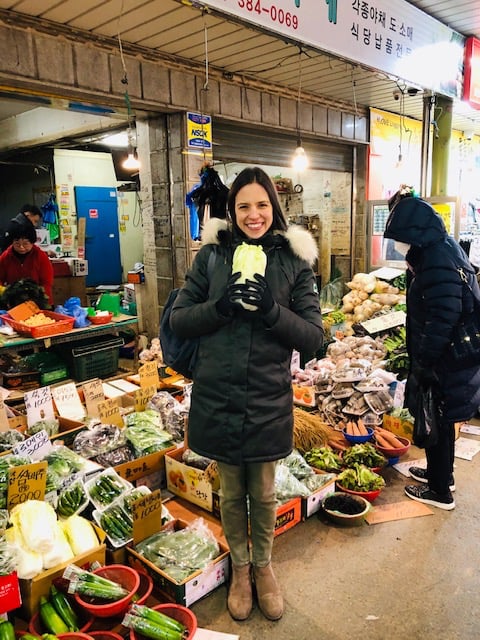
For me, the holiday season presents an opportunity to look back at the year behind me and practice gratitude for all I’ve experienced. One of the highlights of 2019 was having the opportunity to travel to South Korea, where I learned the story of Nasoya kimchi.
I’ve long been a fan (and a proud ambassador) of Nasoya foods. The brand’s tofu is my go-to at home. I was so excited when I first got to sample Nasoya’s kimchi this summer: it’s completely vegan, but it has the wonderful umami we associate with kimchi thanks to the use of nutritional yeast in place of fish.
I’ve always enjoyed kimchi, both as a side dish and as an ingredient in other dishes (the kimchi fried rice in Power Plates is one of my favorite recipes in the book, not to mention one of the easiest). But the truth is that I’ve never known much about the history or traditions associated with kimchi, nor with the process of how it’s made, until now.
The week before Thanksgiving, I traveled with members of the Nasoya team to Seoul. It’s the farthest I’ve ever been from home, and I’ll always remember the trip as one of my best adventures.
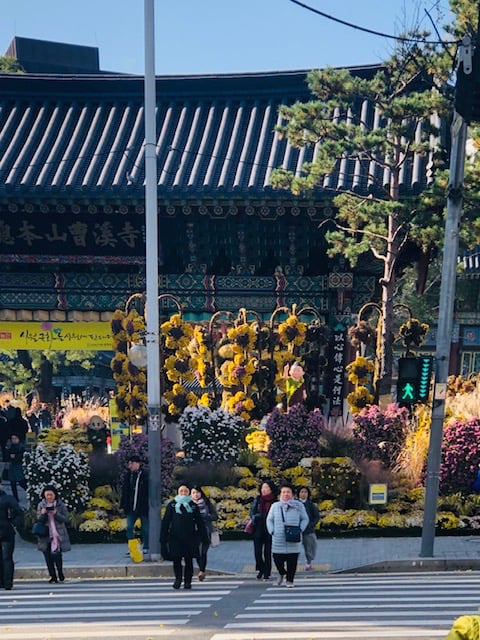
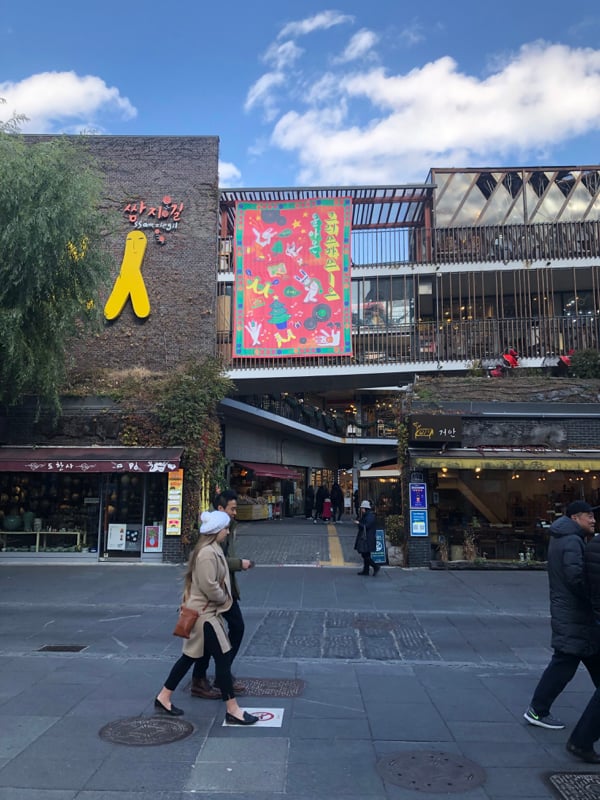
I’m grateful to have had a travel experience that involved culture, sightseeing, history, food, and the chance to see firsthand how Nasoya kimchi is made and where it comes from. On our first day, we spent some time walking and exploring different neighborhoods of Seoul. It was cold and bright, and I loved taking in local colors and sights.
In the morning, we were given a tour of the headquarters of Pulmuone, which is the sister brand of Nasoya in South Korea. Pulmuone was a pioneer of organic farming methods and concerned with sustainability long before these agricultural principles were widespread. And the brand’s slideshow included a look at the many traditional varieties of kimchi and their fermentation times, which I found to be fascinating!
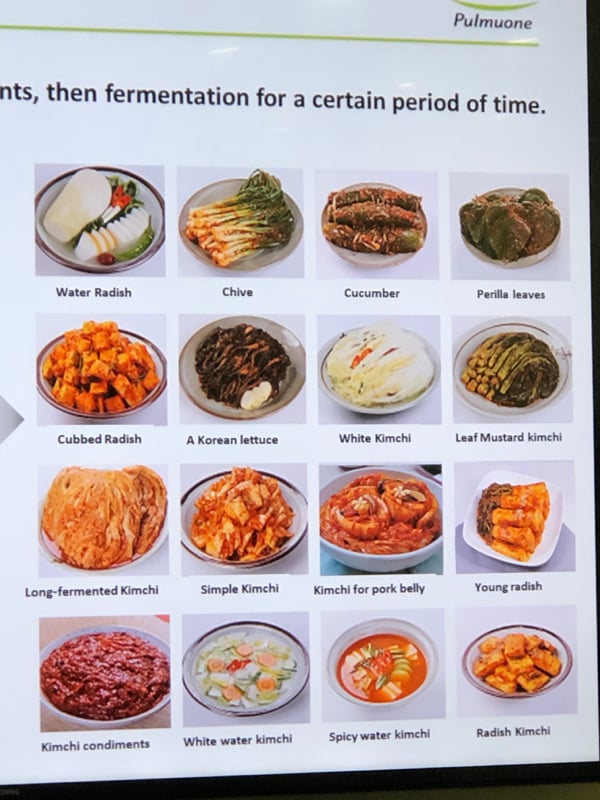
That day, we enjoyed an incredible lunch at Balwoo Gongyang. Did any of you see the episode of Chef’s Table that featured Buddhist nun Jeong Kwan? If you did, then you may have learned something about what Temple Food is. I’d seen the episode, but I was excited to learn about Temple Food firsthand, as our server explained the principles behind it to us.
It is, she told us, cuisine that shares 1,700 years of history with Korean Buddhism. It’s plant-based, but also free of alliums, and the aim of it is to be pacifying and nourishing at the same time. Our lunch included water kimchi (which I would soon learn is often served as an appetizer in Korean dining—it’s a cool, refreshing, broth with radish kimchi in it), soup, rice with mushrooms, sweet potato noodles, a wonderfully earthy burdock root dish, and—my favorite—a savory pumpkin porridge that I quickly fell in love with.

Lunch was a multi-course feast, but fortunately we all made space for some later afternoon food adventures. These included the best mushroom dumplings I’ve ever tasted, and date tea, a local specialty.
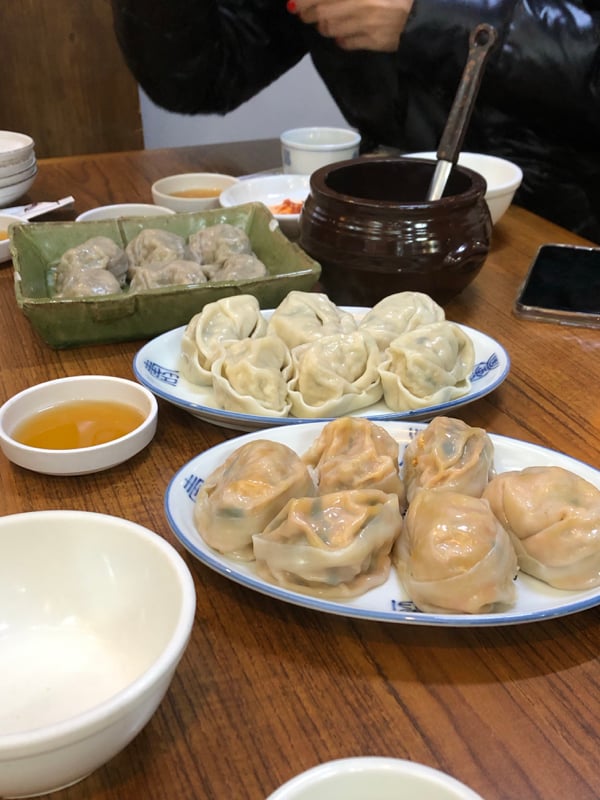
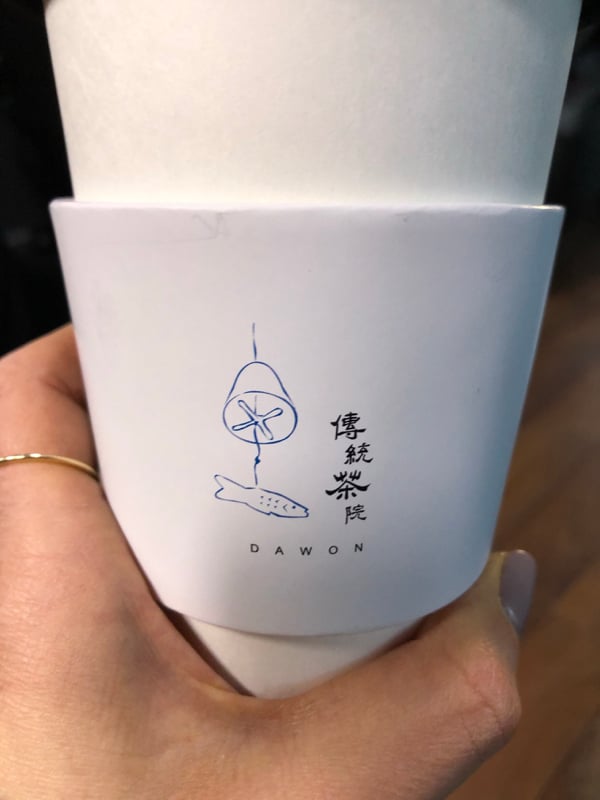
If you’ve ever soaked dates for blending and taken a sip of the soaking water, then you know it gets incredibly sweet. This tea consists of dates that have been slow simmered and only partially strained. The result is a sweet, caramel-flavored mixture with tiny pieces of softened date and pine nuts suspended at the top. It is one of the best drinks I’ve ever had, and I’m dying to figure out how to make it at home.
During the afternoon, we visited the Museum Kimchikan, which is an entire museum (run by Pulmuone) dedicated to the history of kimchi in Korean culture. It was so cool, packed with ancient pots used for making kimchi centuries ago, informative displays on types of kimchi and the season in which they’re traditionally eaten, and a video that delves into kimjang, or the traditional process of preparing and preserving kimchi. This is done in the early winter, when cabbage is at its sweetest, and I felt lucky to be in South Korea at a time of year when I could observe it firsthand (which I soon would).
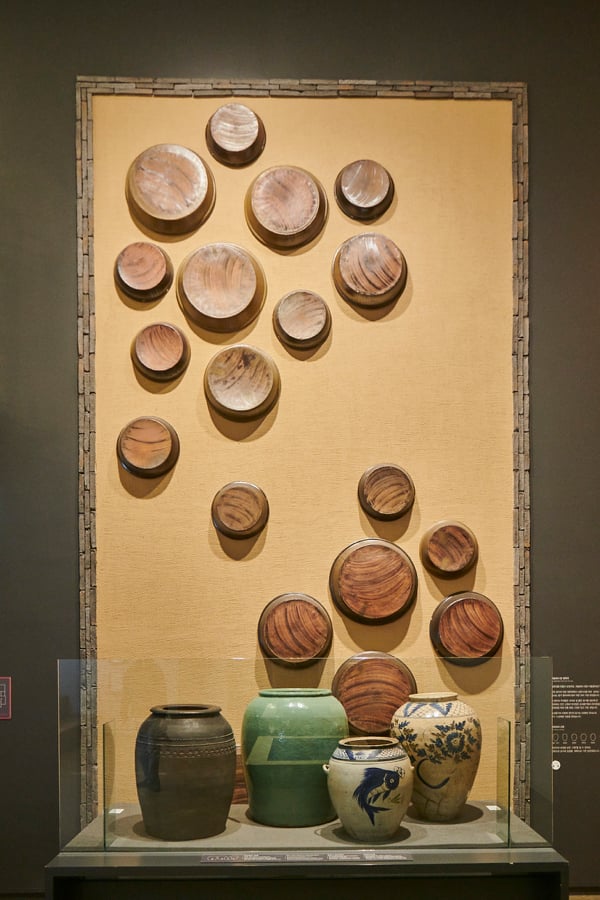
In the evening, we enjoyed another wonderful plant-based, traditional meal. This one included a few of the same dishes we’d sampled at lunch, but with a wider array of kimchi, a few crispy vegetable pancakes that I gobbled up, and a delicious cinnamon tea with dessert. I passed out the moment we got back to our hotel, knowing that the following day would be full.
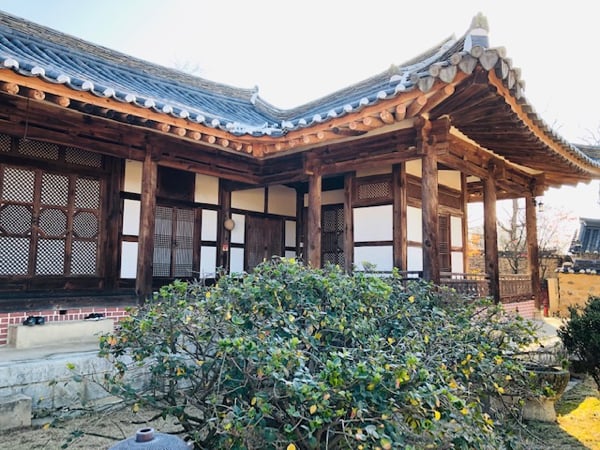
On my second day of the trip, we traveled south of Seoul to a Hanok, or traditional Korean home, located near Daejeon. Hanoks were first built in the 14th century; this one has been passed between generations of a family for centuries now.
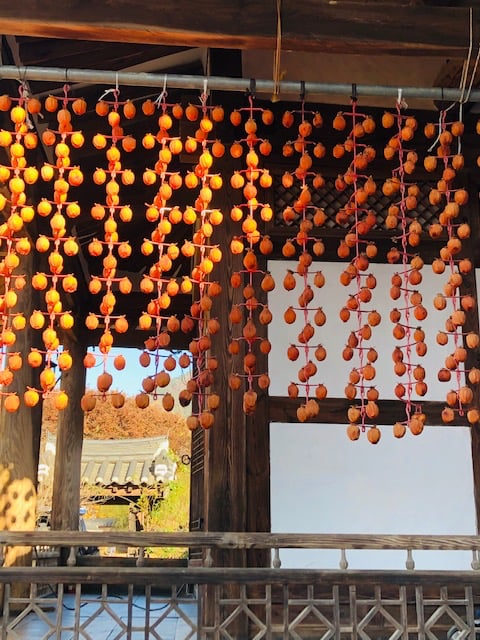
Members of the family who live in the Hanok still prepare kimchi according to traditional methods: blanching the cabbage, salting it, rubbing it with garlic, chilis, fish sauce, and other seasonings, and allowing it to ferment for months at a time.
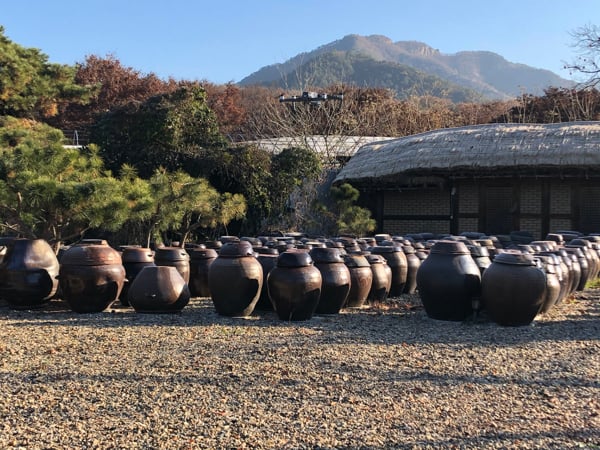
Nowadays most families have special kimchi fridges, but we saw a lot of traditional earthenware pots during our visit; traditionally, these were buried for temperature control during fermentation.
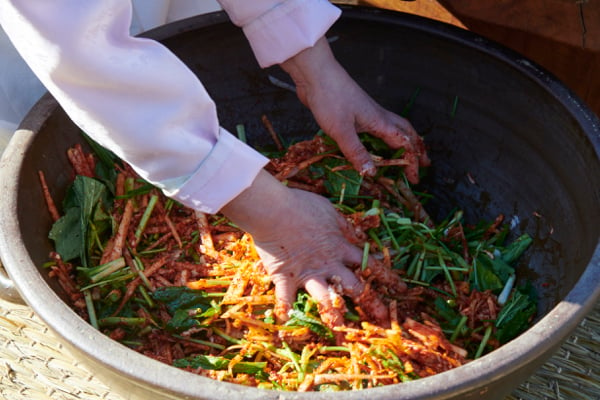
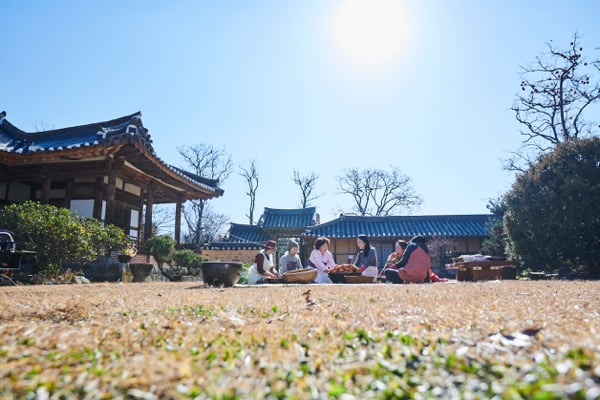
Chef Judy Joo, who’s known for her work on the Food Network among other awesome culinary accomplishments, was also on this trip. I got to watch her making kimchi with members of the family. It was so fascinating to watch their expert, orchestrated movements as they rubbed and folded the cabbage leaves. In a way, the habitual rhythms of the process reminded me of bread kneading.
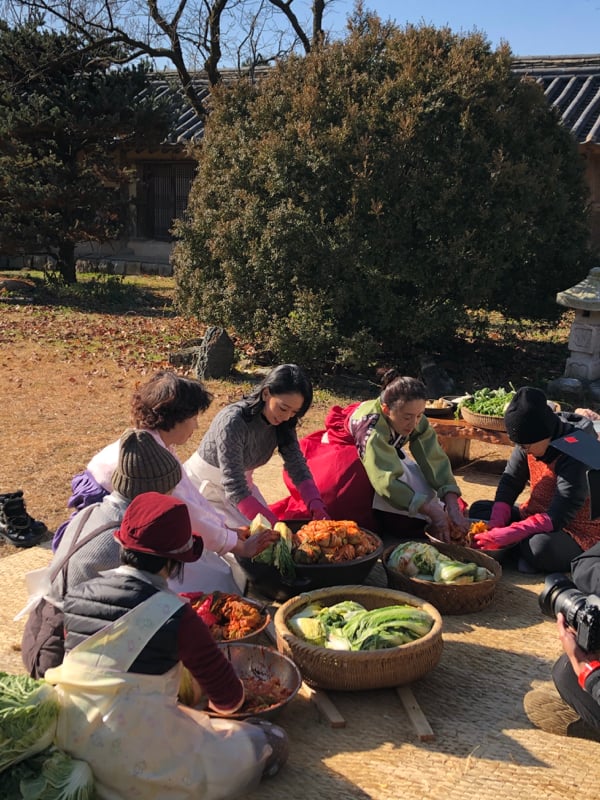
On the following day, we did a little more local sightseeing. This included a trip to the beautiful Mireuksaji Stone Pagoda, which dates back to the 7th century. It is the oldest stone pagoda in Korea, and it’s been designated as a national treasure. It was wonderful to see in person, and I also enjoyed learning about the extensive restoration process that’s underway right now to keep the pagoda intact for future generations.
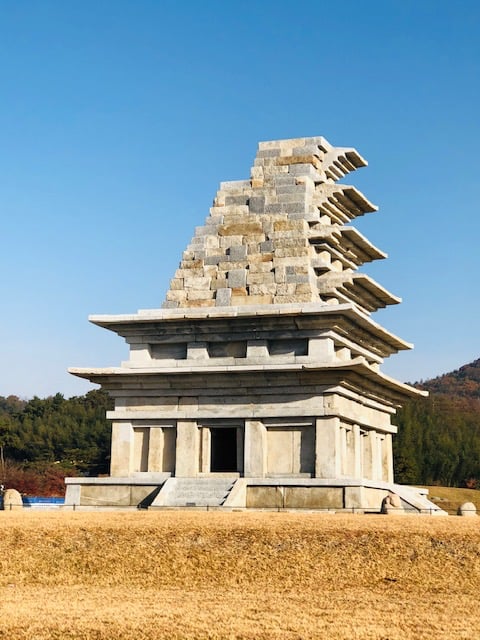
On our way back to Seoul, we had a chance to tour the factory where Nasoya kimchi is made. I loved this part of the trip; it allowed me to see how a time-honored process is being scaled for distribution in the modern world.
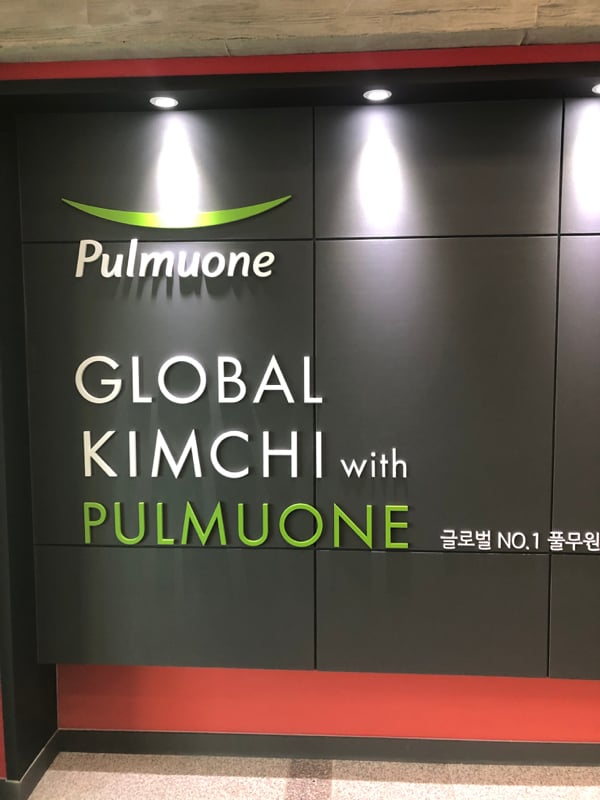
I wasn’t able to take photos inside the factory because food safety and sanitation are upheld so tightly, but it was all very, very interesting. I saw the cabbage being blanched along with the process of its transformation into kimchi. And I left with some of Nasoya’s spicy kimchi, which I never mind having extra of.
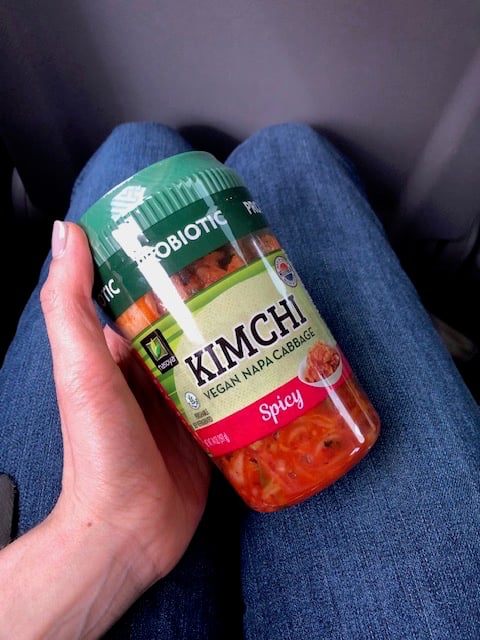
To take a traditional, ancient method of preparing food and scale it for our fast-paced modern world can never be easy, and some authenticity is always lost. But I was really impressed by how seriously and respectfully production takes place at the factory, along with all of the consideration of safe handling (the RD in me can’t help but think about it since my food service rotation!).
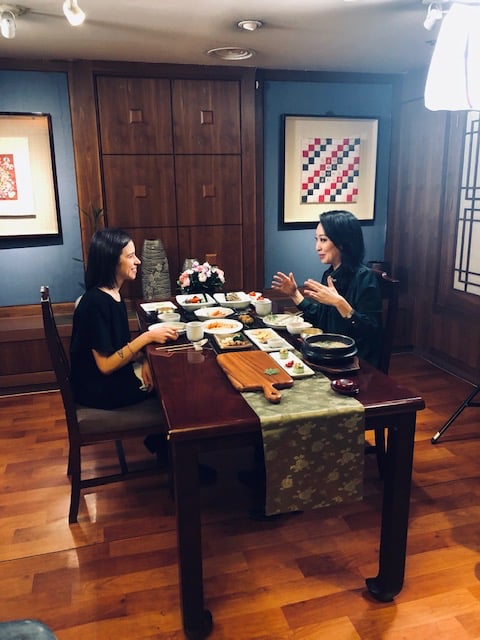
My last day of the trip, spent in Seoul, was so special. Judy Joo and I shared a vegan feast (there were at least twelve plant-based dishes on that table!) while having a chat on camera about the health benefits of kimchi.
I touched on the benefits of fermented and probiotic foods, as well as the fact that kimchi is rich in fiber and the wide array of micronutrients found in cruciferous vegetables. Those phytochemical compounds may help to stave off a lot of common chronic health conditions. And of course, kimchi can add tons of flavor to a meal without a lot of fat or sugar, making it a vibrant and healthful seasoning option.
In turn, Judy was able to walk me through each dish on the table, explaining its origins and highlighting some of the ingredients used. I ate a lot of things in Korea I’d never tasted before, including balloon flower root, a number of local leafy greens, and a few different root vegetables. Judy was the expert on all of them, and I felt so lucky to get a sampling of her knowledge.
During our chat, Judy and I also shared our mutual love of Nasoya kimchi and its accessibility: it’s both vegan and gluten free, which means that more folks around the world can enjoy it!

When I look back on this trip, the overwhelming emotion I feel is gratitude. Not only for the opportunity to taste delicious food and see beautiful sights with experienced guides, but also for the chance to depart from my comfort zone.
When I shared parts of this trip on Instagram, a few friends and followers shared how much they love travel and adventurous food experiences. I so admire that kind of openness and courage, but the truth is that I’m not a born traveler. I’m a creature of habit, and I get attached to my routines, sometimes far too much. It takes a lot for me to spread my wings, which is part of why I’ve seen much less of the world than many of my friends and family.
I don’t know if I’d have had the guts to travel as far as Seoul on my own, which is part of why it is so special and fortunate that the opportunity was given to me. And I traveled with companions who could teach me, guide me, and—very happily, since I’m vegan—translate menus and make food recommendations for me. I don’t take the company I had for granted even for a moment; it’s part of why I had such a great experience.
Like many food lovers, I like to experiment with flavors and ingredients and dishes from around the world. But I can’t claim to do that with true expertise or authenticity. This cross-cultural experience showed me what it’s like to learn about a dish by seeing and experiencing the place where it comes from. There’s nothing like it, and I’m humbled to have had my understanding of kimchi, and Korean cuisine in general, so profoundly deepened.
Finally, but importantly, I take horizon-expanding experiences like this as an opportunity to acknowledge how far I’ve come in my recovery.
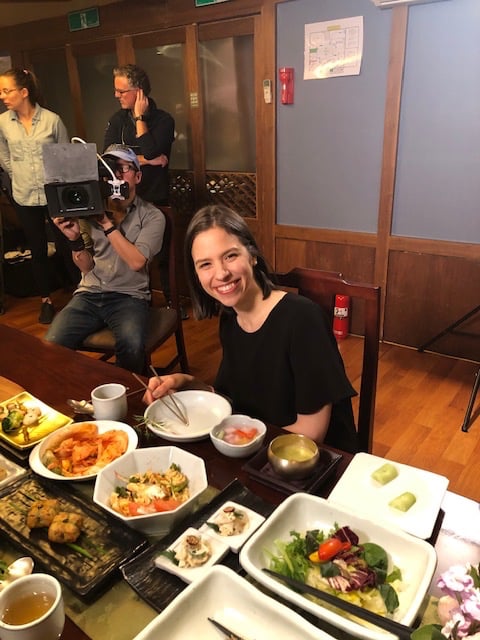
I don’t know that I could have taken a trip like this ten or fifteen years ago, and if I had, I’m not sure I could have enjoyed it. I’d have spent so much of my time in knots of anxiety about what I was eating and how it was different from what I’m used to, trying to plan and research my options so that everything would be knowable in advance, missing out on sights and sounds while attempting to calculate the day’s intake in my head, and living in fear of the unfamiliar.
That I can enjoy the tremendous privilege of seeing more of this world, let alone to do that while also savoring food experiences, is one of many reasons that I give thanks for recovery.
Thank you for following along today as I shared memories of my kimchi journey! Needless to say, my trip to South Korea has inspired some fun experiments in the kitchen, including one simple and already beloved recipe that I can’t wait to share with you soon. Happy Sunday.
xo
This post is sponsored by Nasoya. All opinions are my own. Thank you for your support!
The post Weekend Reading: To South Korea and Back appeared first on The Full Helping.